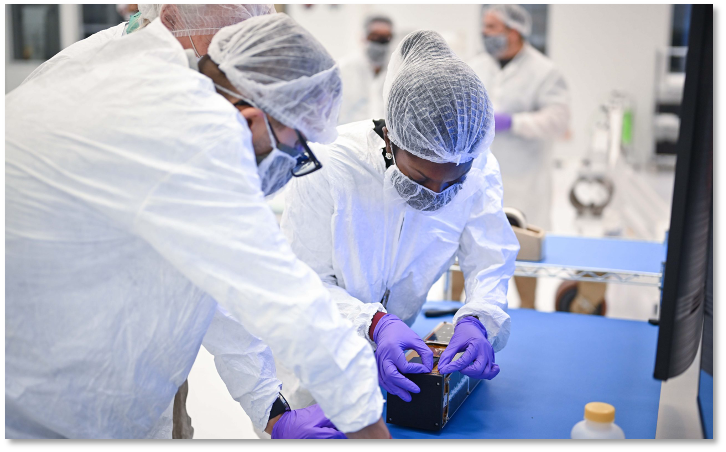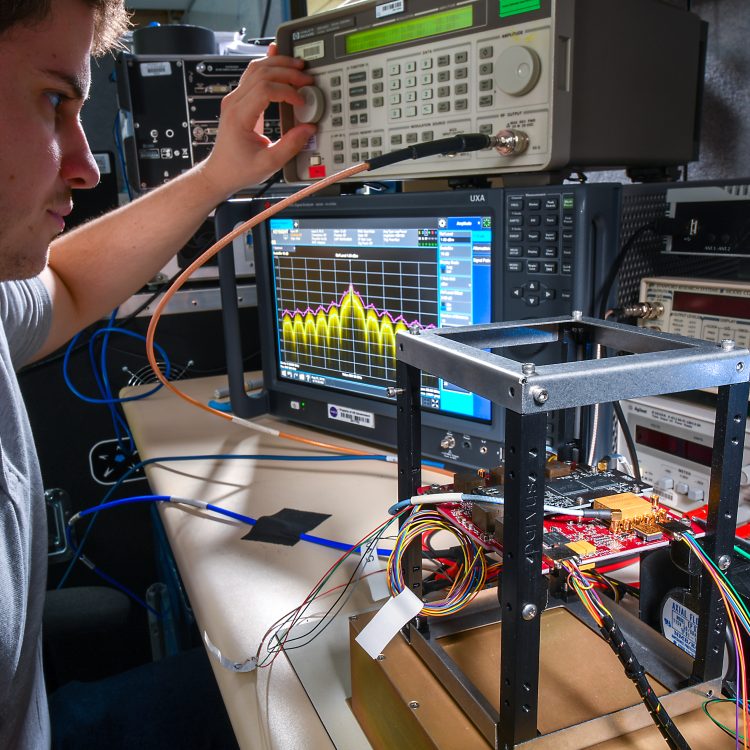Introduction
NASA’s Glenn Research Center in Cleveland, Ohio, is renowned for its pioneering contributions to aerospace technology. Among its many achievements, the center has recently reached a significant milestone with the launch of advanced automated technology into space. This achievement highlights NASA Glenn’s role in developing cutting-edge solutions that enhance space exploration and advance our understanding of the cosmos. This article provides a comprehensive overview of the automated technology developed at Glenn, the significance of its recent space launch, and the broader implications for future space missions and technological innovation.
1. The Evolution of Automated Technology at NASA Glenn
Automated technology has been a key focus at NASA Glenn Research Center, which has long been at the forefront of aerospace and engineering advancements. The development of automated systems is crucial for improving the efficiency and capabilities of space missions.
1.1 Historical Context and Development
NASA Glenn has a rich history of technological innovation, with a focus on developing systems that enhance space exploration and aeronautics:
- Early Automation Efforts: Early automated technologies developed at Glenn included advanced control systems and computer simulations that contributed to the success of various space missions.
- Technological Advancements: Over the decades, Glenn has expanded its research to include more sophisticated automation technologies, such as robotics, autonomous systems, and artificial intelligence.
1.2 Key Areas of Research and Development
At the core of Glenn’s research are several key areas:
- Robotics: Development of robotic systems for space exploration, including robotic arms, rovers, and autonomous spacecraft systems.
- Autonomous Systems: Creation of systems capable of performing tasks and making decisions without human intervention, crucial for deep space exploration.
- Artificial Intelligence: Integration of AI algorithms to enhance the capabilities of automated systems, enabling more complex and adaptive behavior.
2. The Automated Technology and Its Features
The latest automated technology developed at NASA Glenn represents a significant leap forward in space technology. This technology, which recently launched into space, showcases several advanced features and capabilities.
2.1 Design and Engineering
The design of the automated technology reflects NASA Glenn’s commitment to innovation and functionality:
- Modular Architecture: The technology is designed with a modular architecture, allowing for easy upgrades and integration with other systems.
- Durability: Built to withstand the harsh conditions of space, including extreme temperatures and radiation, ensuring reliable performance throughout its mission.
2.2 Core Capabilities
The automated technology boasts several core capabilities:
- Autonomous Navigation: Equipped with advanced navigation systems that allow it to traverse and operate in space environments without direct human control.
- Data Collection and Processing: Capable of collecting and processing data in real-time, providing valuable insights for scientific research and mission operations.
- Self-Maintenance: Incorporates self-maintenance features that enable it to perform routine checks and repairs autonomously, enhancing its longevity and reliability.
2.3 Technological Innovations
Several key innovations characterize the technology:
- Advanced Sensors: Utilizes state-of-the-art sensors for environmental monitoring and situational awareness, improving its ability to interact with and respond to its surroundings.
- High-Efficiency Power Systems: Includes advanced power systems that optimize energy use and ensure continuous operation in the space environment.
- Adaptive Algorithms: Employs adaptive algorithms that allow it to learn from its experiences and improve its performance over time.
3. The Space Launch: A Historic Milestone
The recent launch of this automated technology marks a historic milestone for NASA Glenn and the broader aerospace community. The launch is a testament to the center’s engineering prowess and its commitment to advancing space exploration capabilities.
3.1 Preparation and Planning
The preparation for the launch involved extensive planning and coordination:
- Pre-Launch Testing: The technology underwent rigorous testing to ensure its functionality and reliability. This included simulations and stress tests to replicate space conditions.
- Launch Integration: Engineers worked on integrating the technology with the launch vehicle, ensuring that it was securely attached and configured for deployment.
3.2 The Launch Event
The launch took place on [insert specific date], and the event was a significant achievement for NASA Glenn:
- Launch Vehicle: The technology was launched aboard [insert name of the launch vehicle], which provided the necessary propulsion to reach space.
- Mission Objectives: The primary objectives of the launch included deploying the technology into its operational orbit and initiating its mission tasks.
3.3 Post-Launch Activities
Following the launch, several key activities were undertaken:
- Deployment and Calibration: The technology was deployed into its designated orbit and underwent calibration to ensure that all systems were functioning as expected.
- Mission Operations: The technology began its mission operations, including data collection, system checks, and performance evaluations.

4. Impact on Space Exploration and Future Missions
The successful launch of the automated technology has significant implications for space exploration and future missions. Its advanced capabilities promise to enhance various aspects of space missions.
4.1 Enhancing Space Mission Efficiency
Automated technology plays a crucial role in improving the efficiency of space missions:
- Reduced Human Intervention: By performing tasks autonomously, the technology reduces the need for human intervention, allowing mission teams to focus on other critical aspects of the mission.
- Increased Operational Capabilities: The technology’s advanced capabilities enable it to undertake complex tasks that would be challenging or impossible for human operators.
4.2 Scientific Research and Exploration
The technology contributes to scientific research and exploration by:
- Collecting Valuable Data: It provides valuable data on space environments, celestial bodies, and other phenomena, contributing to our understanding of the universe.
- Supporting Long-Duration Missions: Its autonomous features make it well-suited for long-duration missions, including those that involve deep space exploration.
4.3 Advancements in Space Technology
The launch represents a significant advancement in space technology:
- Innovation and Development: The technologies developed and tested at NASA Glenn set the stage for future innovations in space systems and automation.
- Inspiring Future Research: The success of this mission inspires further research and development in automated systems, robotics, and artificial intelligence for space applications.
5. Collaboration and Partnerships
The development and launch of the automated technology involved collaboration with various partners and organizations.
5.1 Industry Partnerships
NASA Glenn collaborated with several industry partners to develop and launch the technology:
- Aerospace Companies: Partnerships with aerospace companies provided expertise in spacecraft design, manufacturing, and launch services.
- Technology Providers: Collaborations with technology providers contributed to the development of advanced sensors, power systems, and control algorithms.
5.2 Academic and Research Institutions
Academic and research institutions played a role in supporting the development of the technology:
- Research Collaborations: Collaborative research efforts provided valuable insights and advancements in automated systems and space technology.
- Educational Contributions: Educational institutions contributed to the development of the technology through research programs, student involvement, and knowledge sharing.
6. Future Prospects and Next Steps
As the automated technology embarks on its mission, several future prospects and next steps are anticipated.
6.1 Ongoing Mission Monitoring
The technology’s performance will be continuously monitored:
- Data Analysis: Data collected during the mission will be analyzed to assess the technology’s performance and effectiveness in achieving its objectives.
- System Updates: Updates and adjustments may be made based on the data collected to optimize performance and address any issues that arise.
6.2 Future Missions and Applications
The success of this technology opens the door for future missions and applications:
- New Missions: The technology could be used in future space missions, including planetary exploration, space station operations, and deep space exploration.
- Commercial Applications: Advances in automated technology may lead to commercial applications, including satellite servicing, space tourism, and resource exploration.
6.3 Continued Innovation
NASA Glenn will continue to drive innovation in automated technology:
- Research and Development: Ongoing research and development efforts will focus on enhancing the capabilities of automated systems and exploring new applications.
- Technological Advancements: Future advancements in robotics, AI, and autonomous systems will further push the boundaries of space exploration and technology.
7. Conclusion
The recent launch of NASA Glenn Research Center’s automated technology represents a landmark achievement in aerospace engineering and space exploration. This advanced technology not only showcases the center’s commitment to innovation but also highlights the potential for transforming space missions and expanding our capabilities in space. As the technology embarks on its mission, it promises to enhance our understanding of space, improve the efficiency of space operations, and inspire future advancements in aerospace technology. NASA Glenn’s continued efforts in developing cutting-edge technologies will undoubtedly pave the way for new discoveries and achievements in the quest to explore the cosmos.


















































Discussion about this post